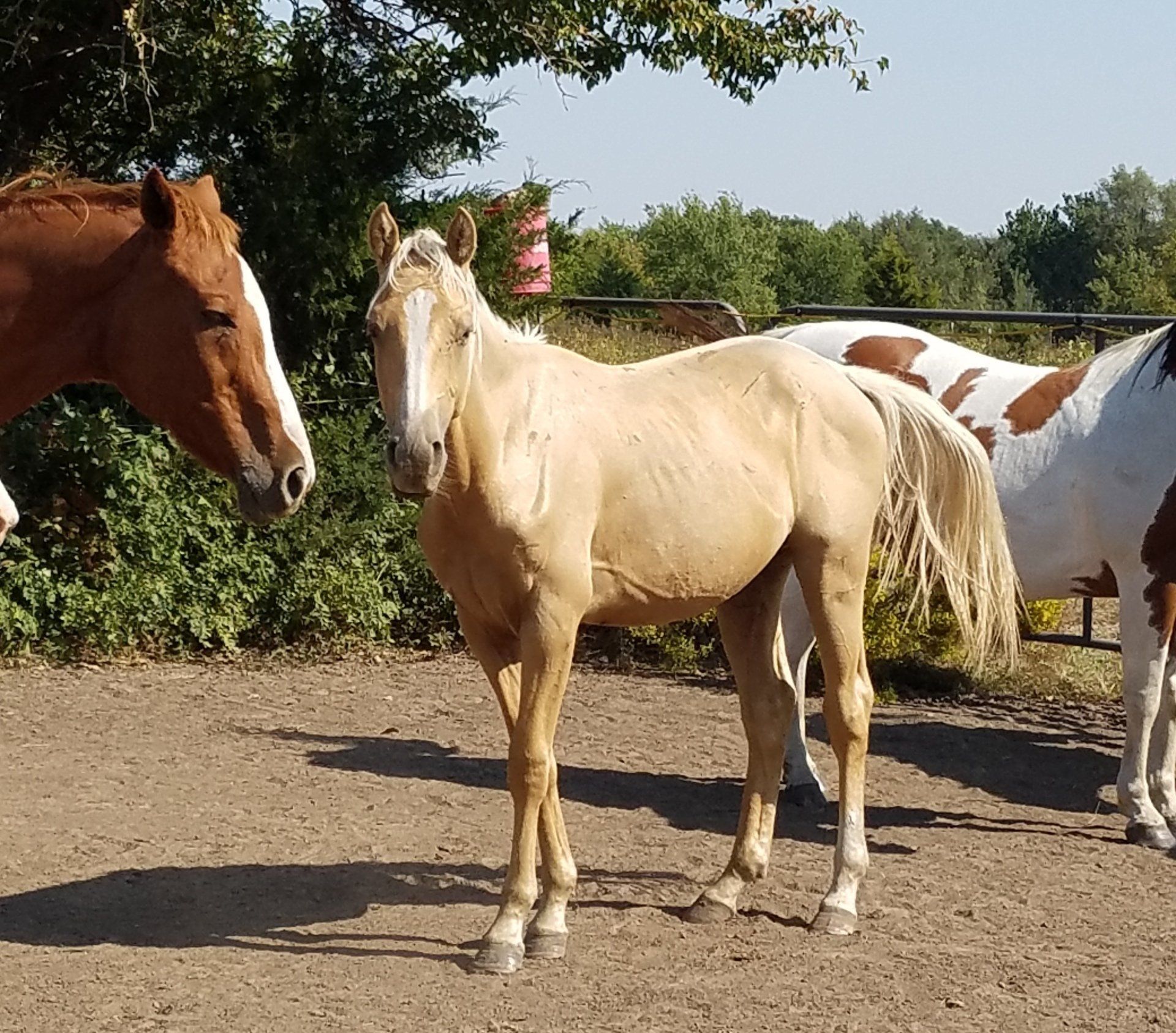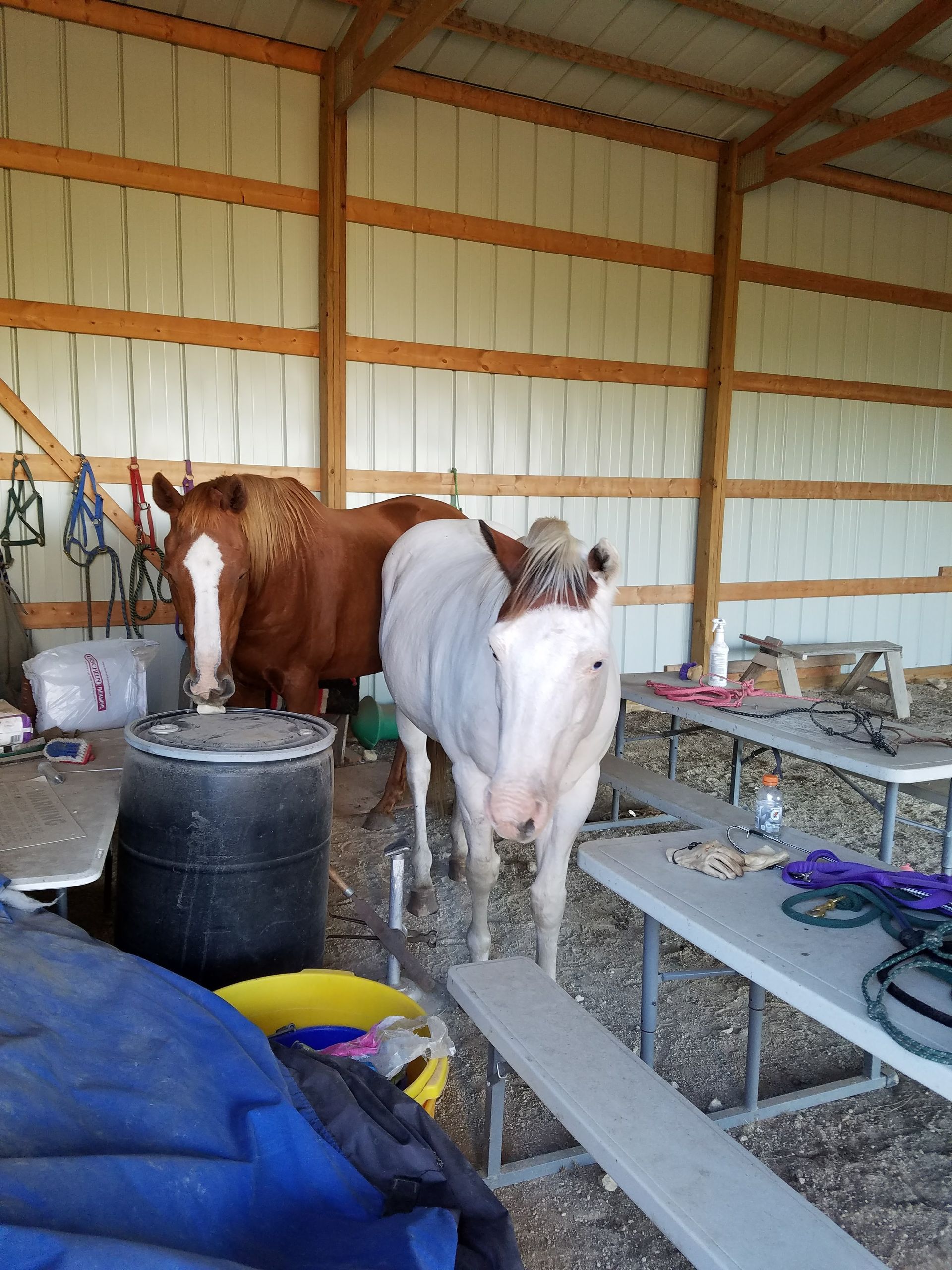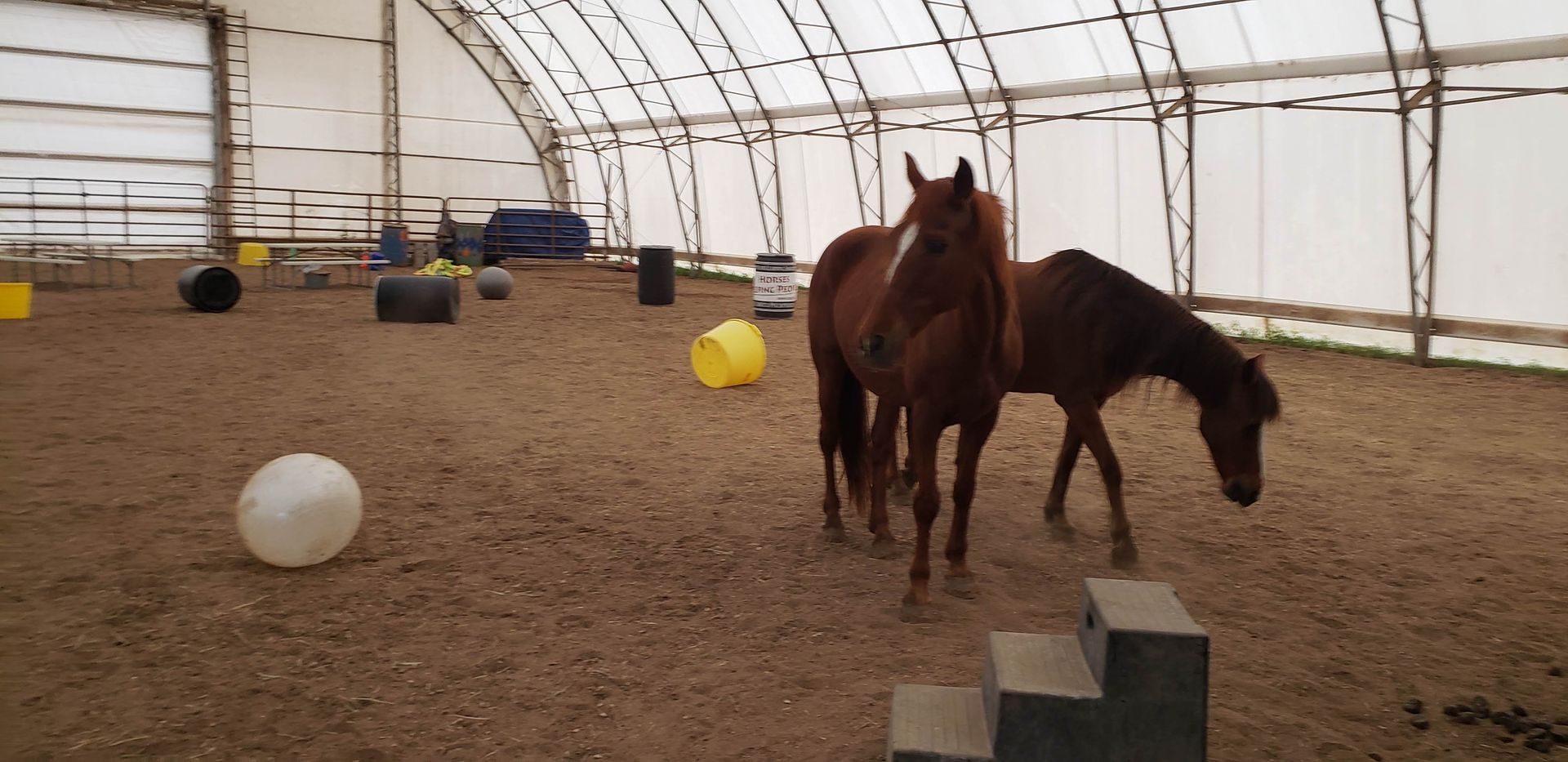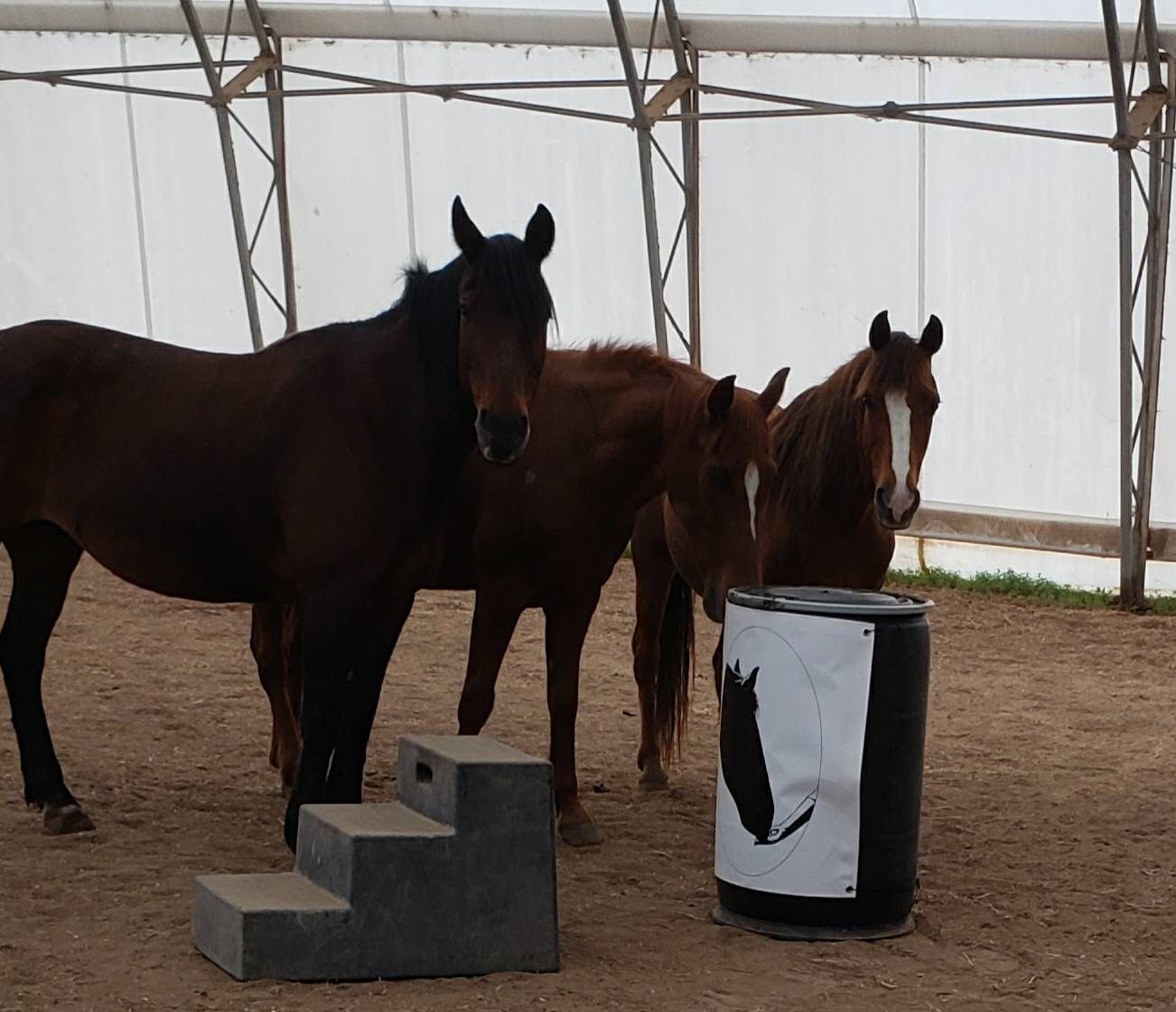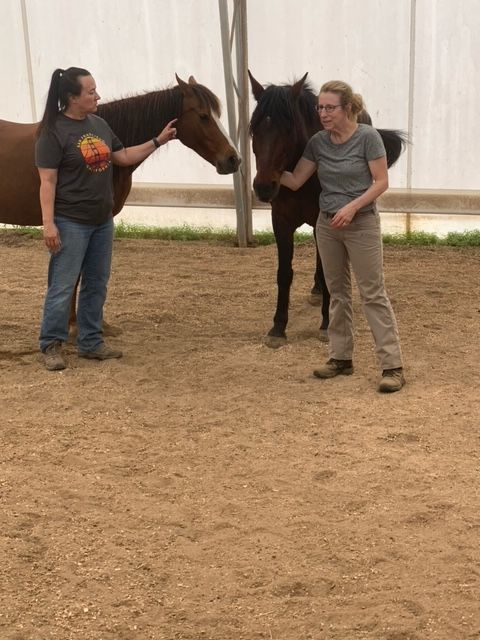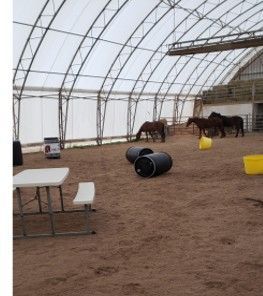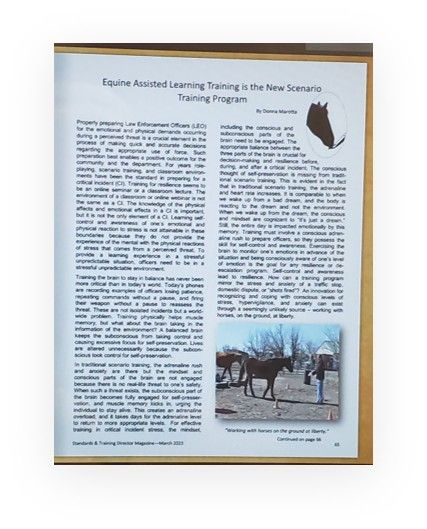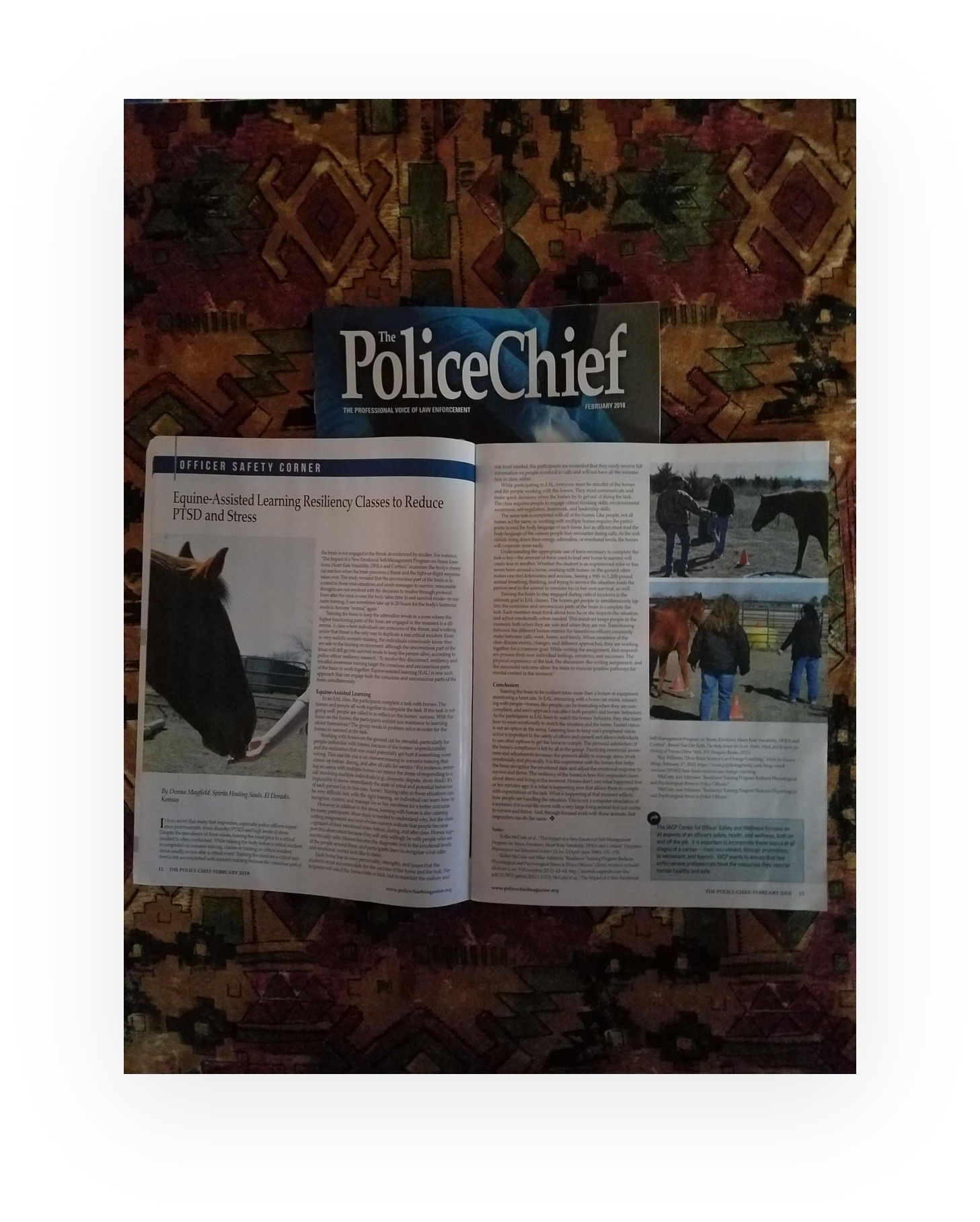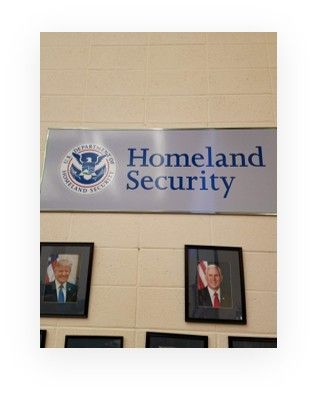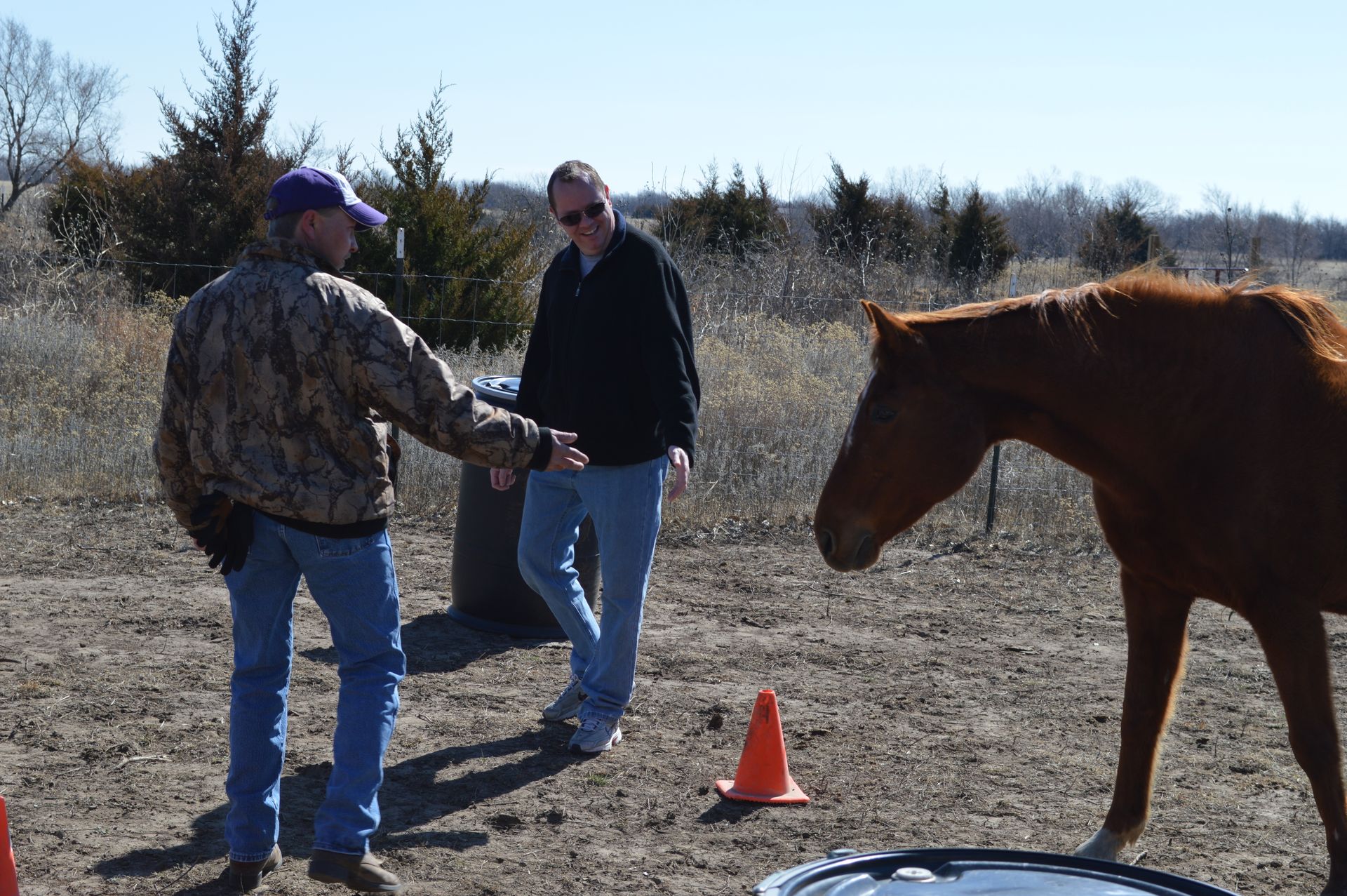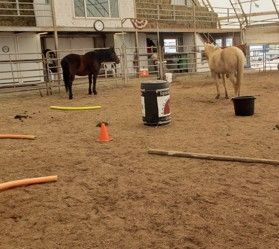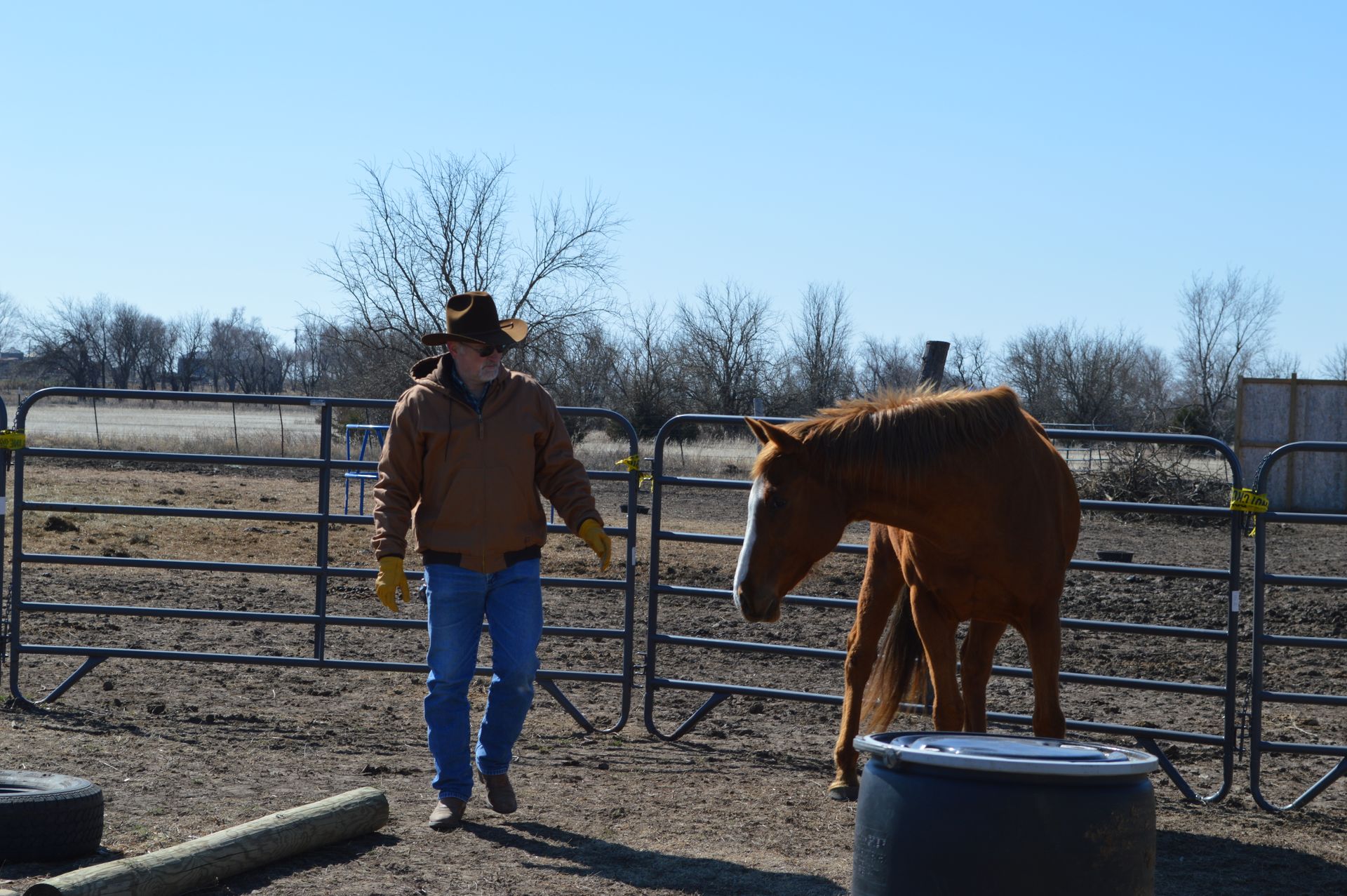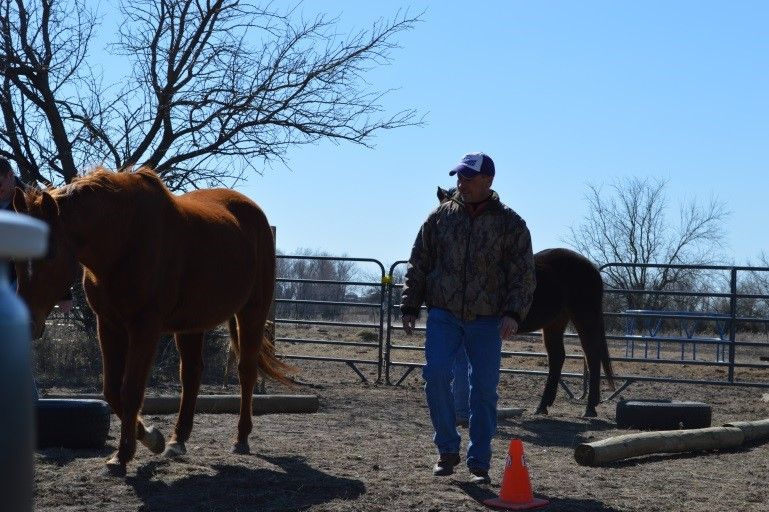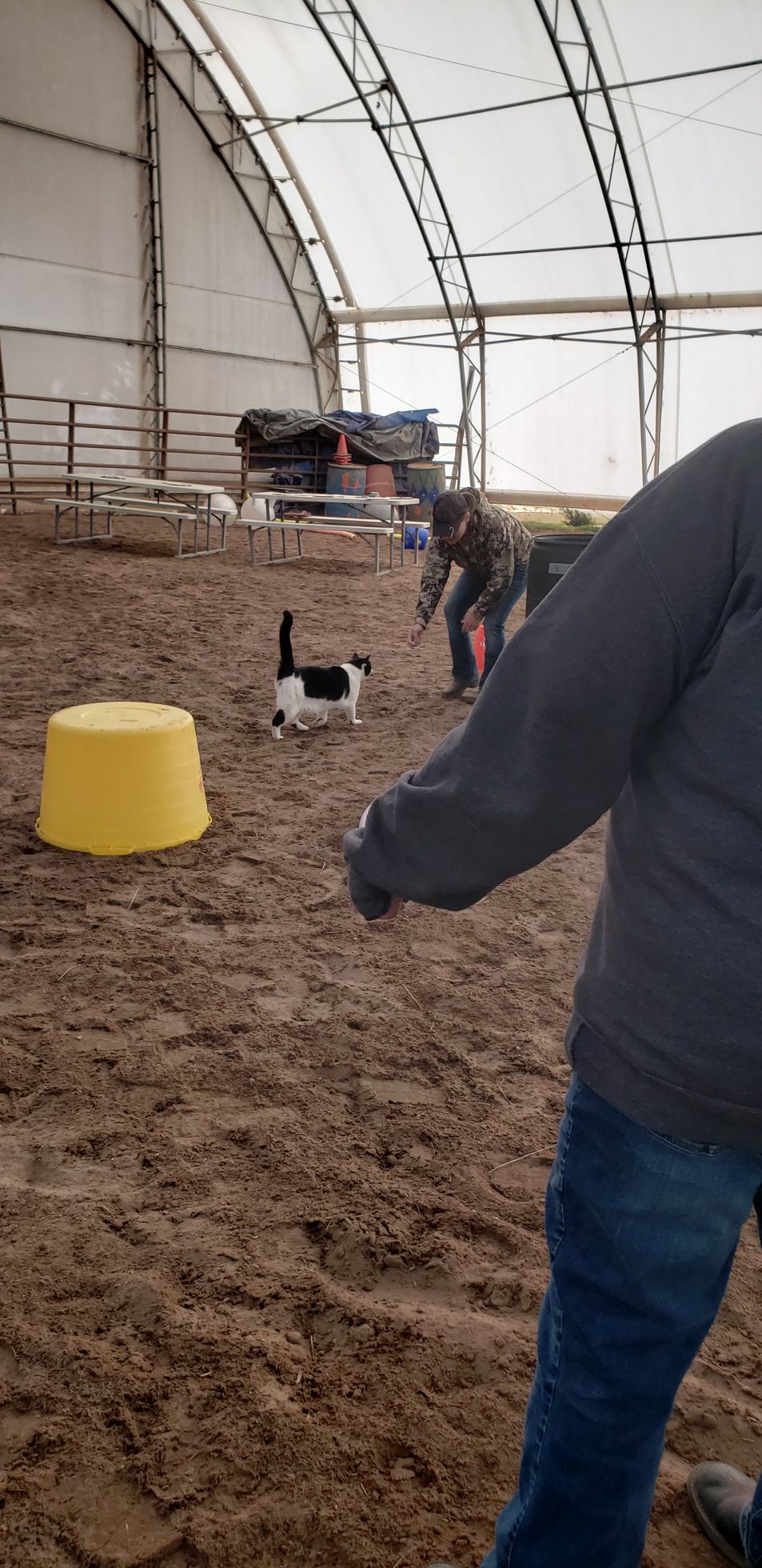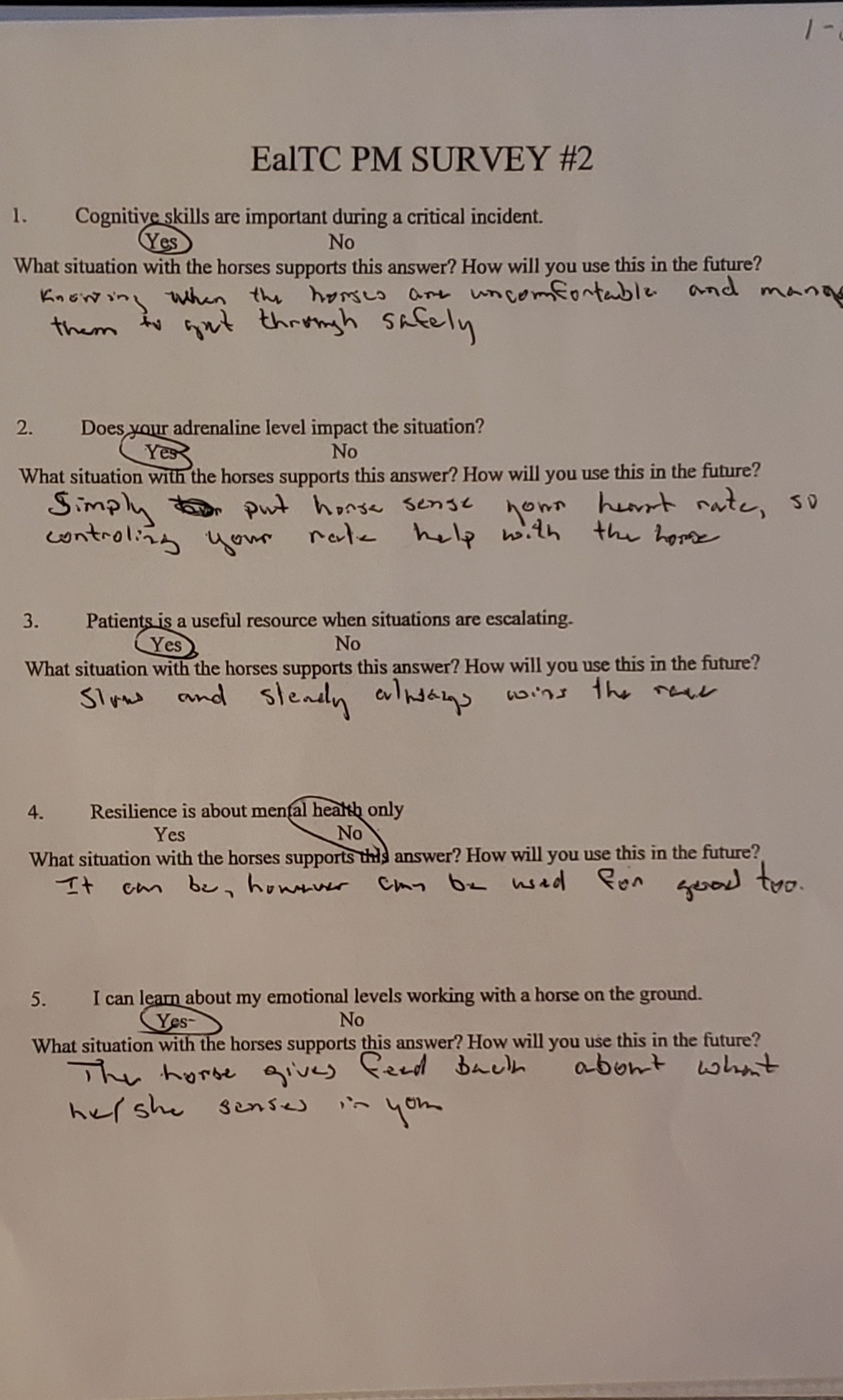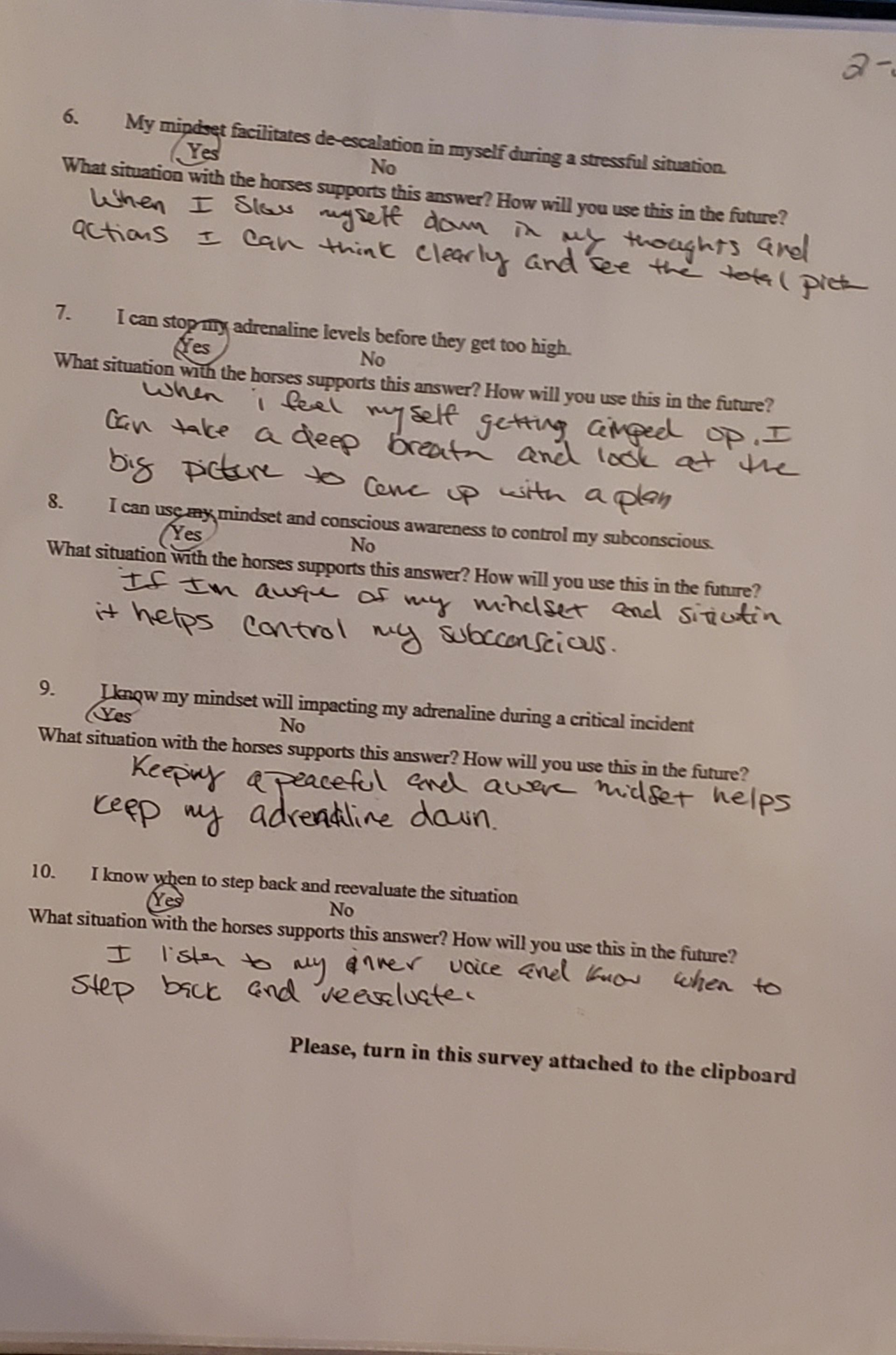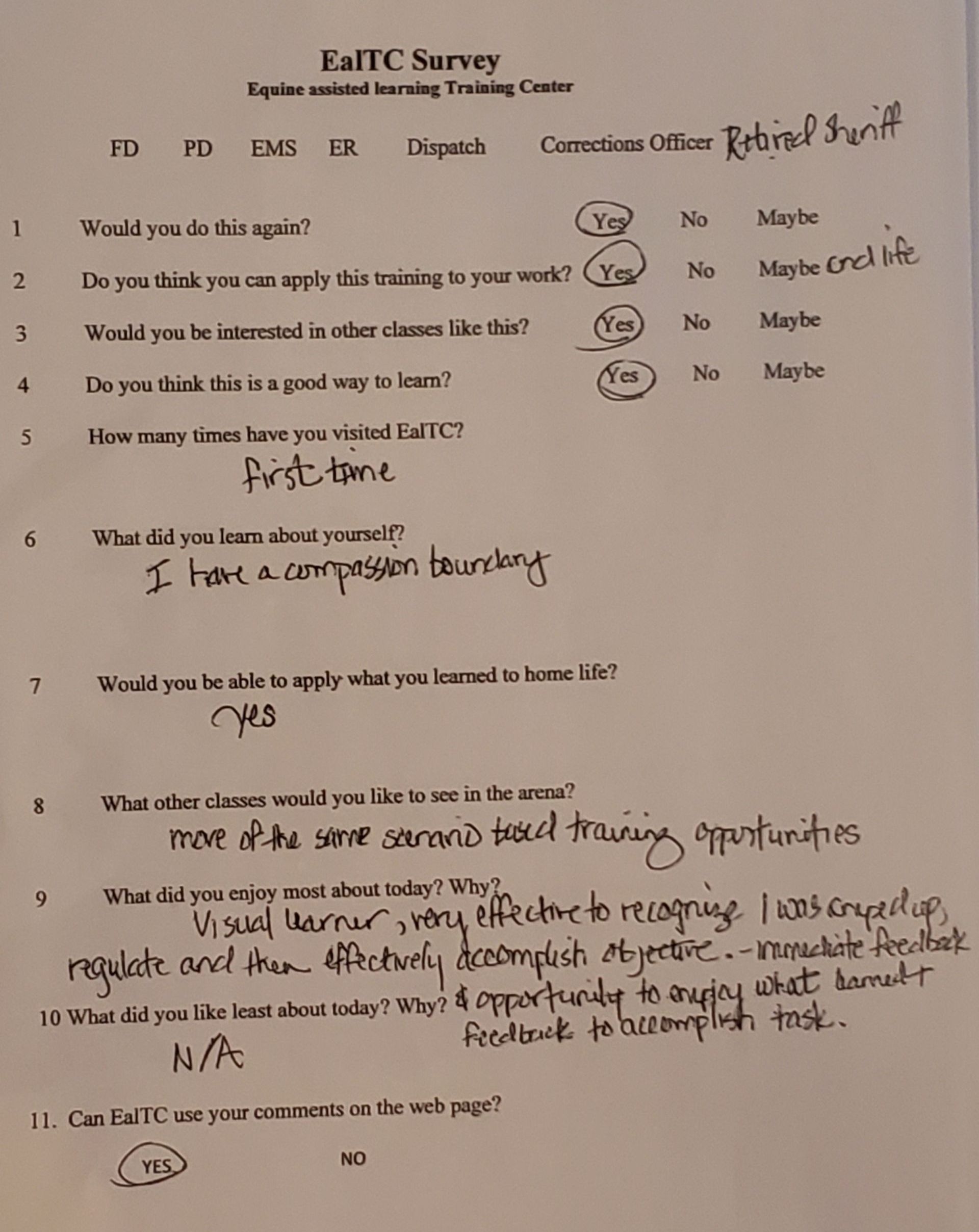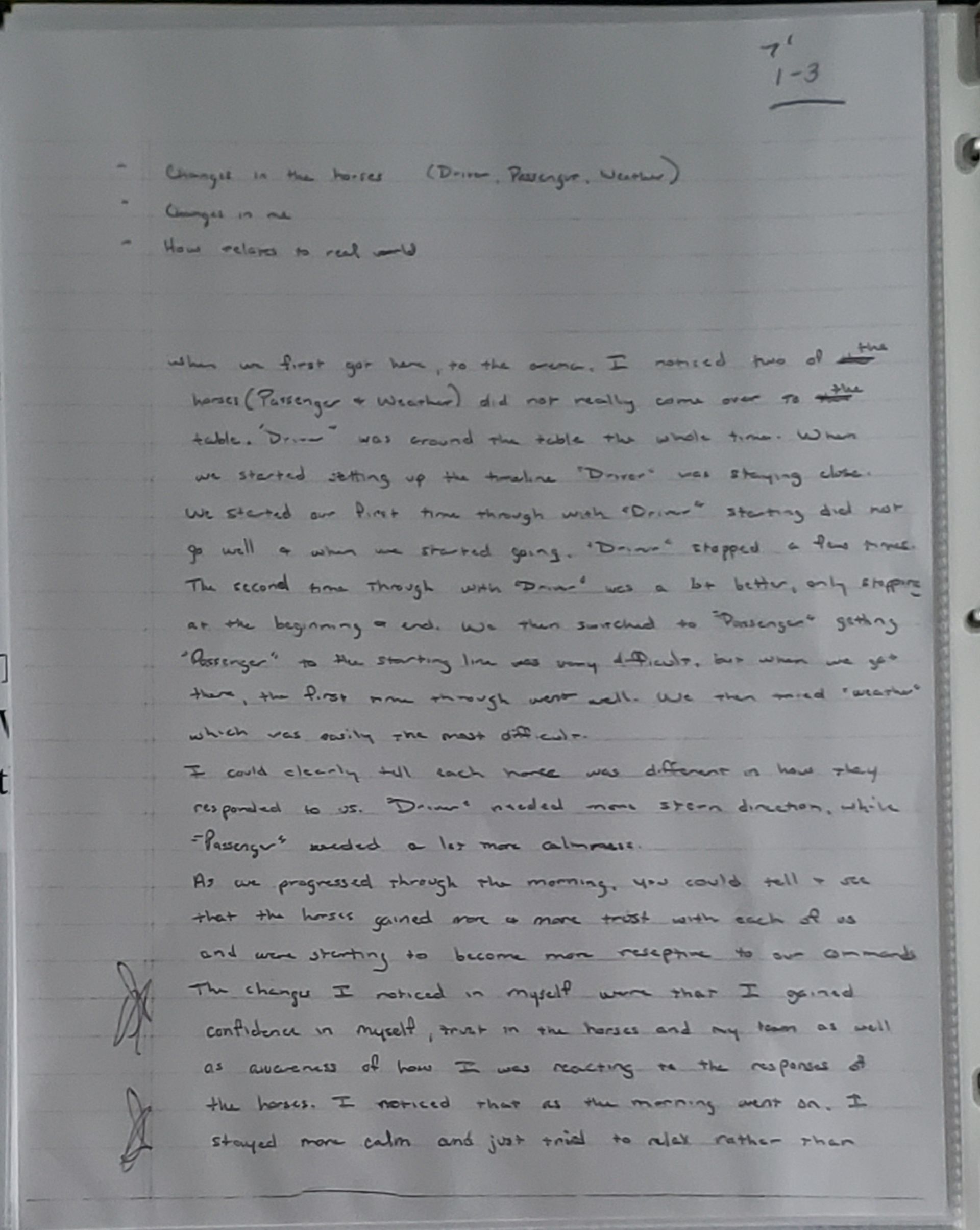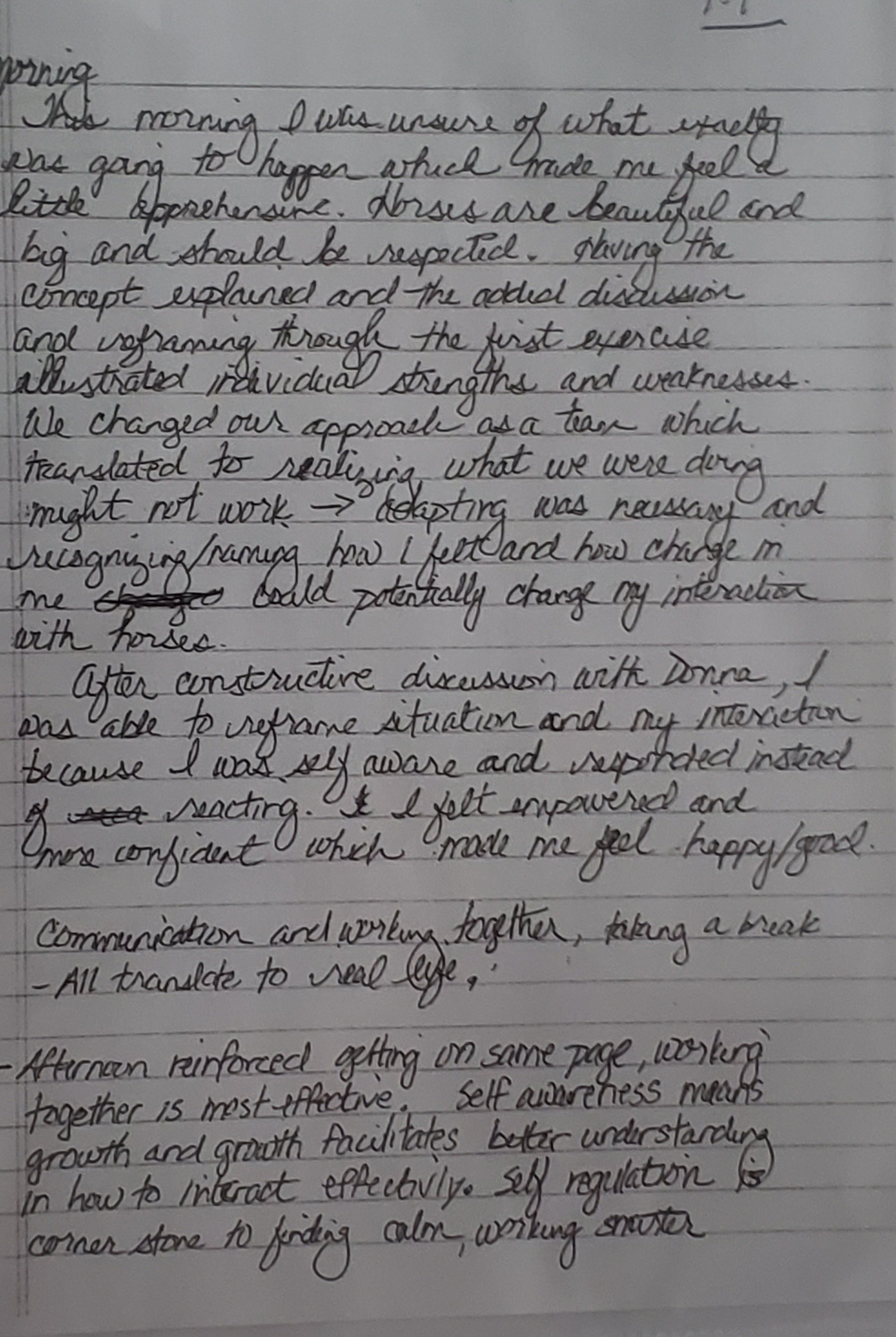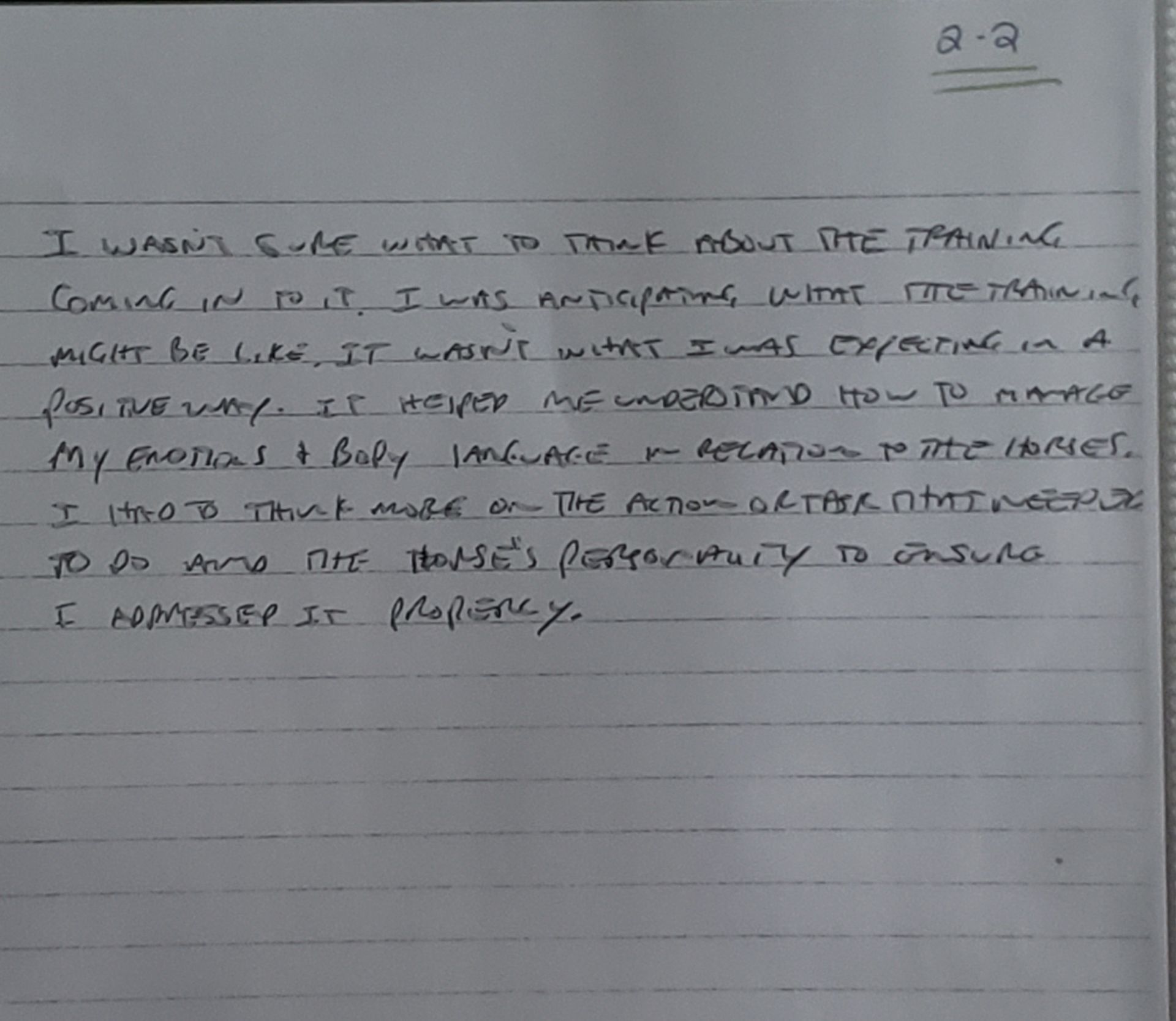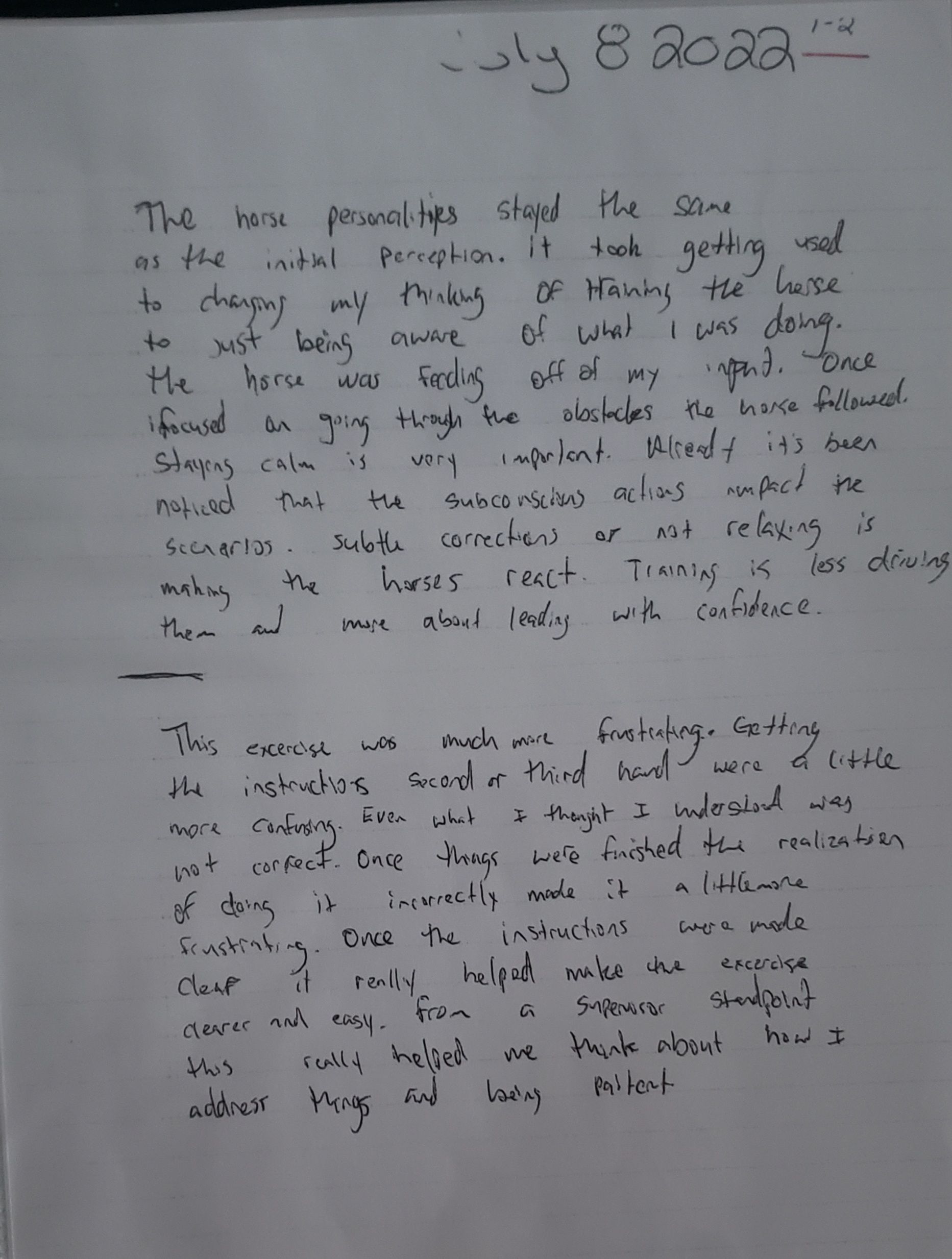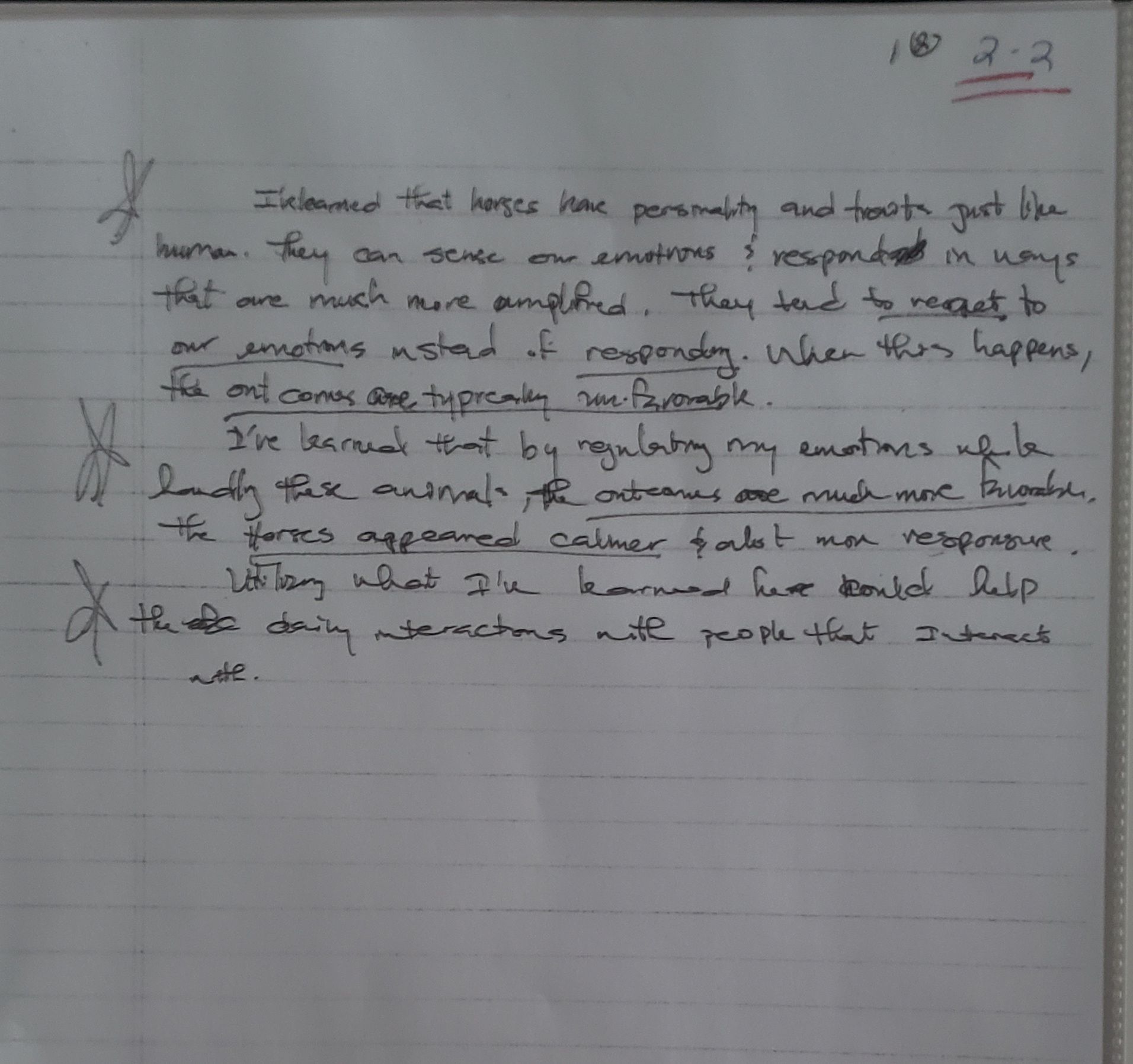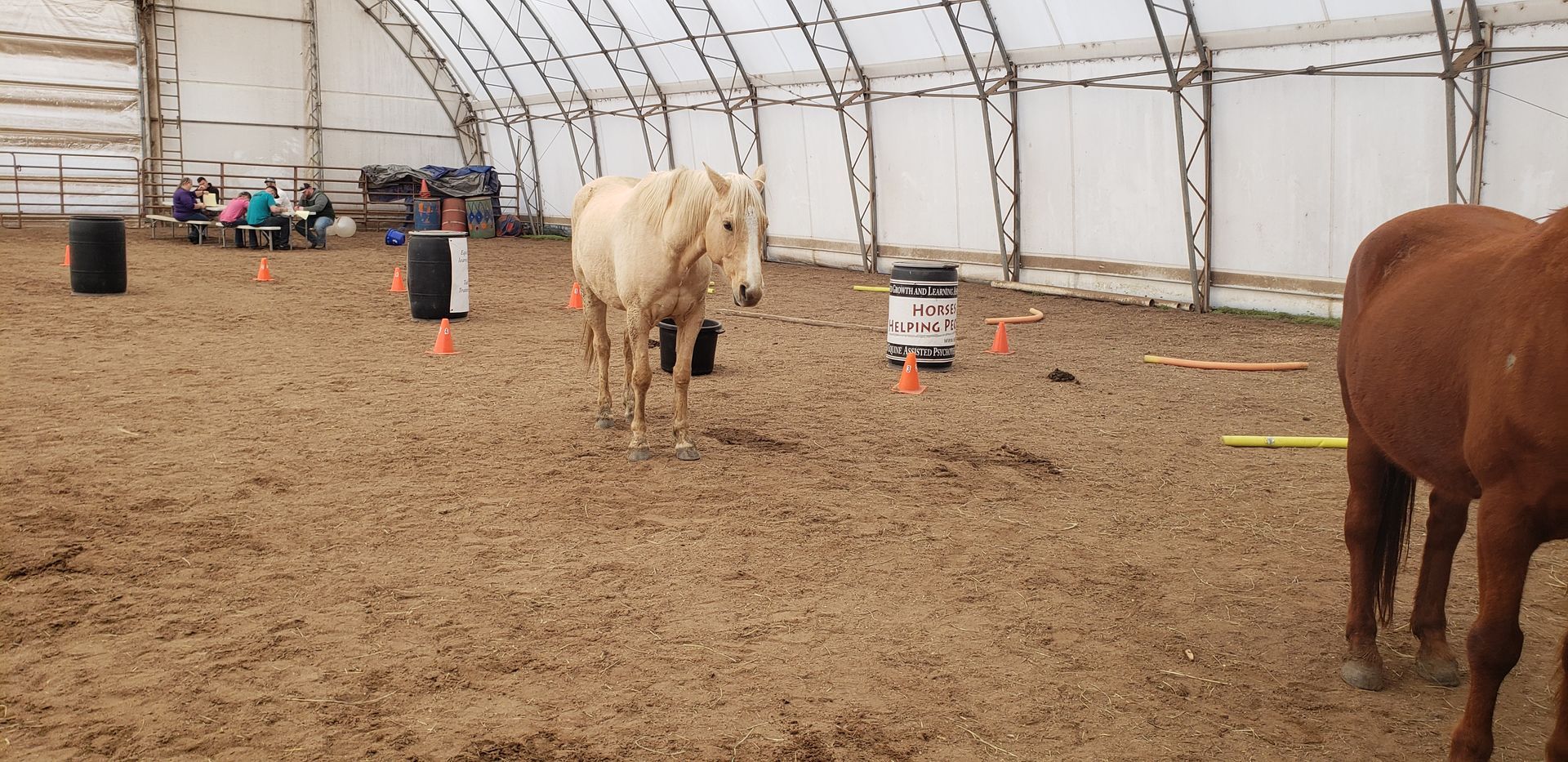
Experience the classroom
The Experiential Learning Framework
- Learning by doing: Participants engage in tasks with horses (e.g., leading, obstacle navigation, grooming) and reflect on their experiences.
- Facilitated reflection: Trained facilitators guide discussions to draw out insights, emotions, and connections to real-life challenges.
- Goal-oriented: Each session is designed around specific personal, professional, or educational goals (e.g., communication, leadership, emotional regulation).
Horse-Human Interaction
- Nonverbal communication: Horses respond to energy, posture, and intention—offering immediate feedback.
- Ground-based activities: No riding is involved. Activities may include leading, liberty work, or team challenges with horses.
- Co-regulation: Horses help participants become more aware of their internal states by mirroring emotions and energy.
Facilitation Style
- Collaborative: Facilitators act as guides, not instructors—encouraging participants to discover their own insights.
- Multi-disciplinary: EAL can incorporate elements from coaching, education, psychology, and leadership development.
The psychological aspect of tactical training is just as critical as physical conditioning or technical skills—because in high-stakes environments, your mind is your most powerful weapon. Whether you're in law enforcement, the military, or emergency response, psychological readiness can mean the difference between success and failure, safety and danger.
Mental Resilience Under Pressure
- Stress inoculation: Training the brain to stay calm during chaos helps prevent panic and tunnel vision.
- Emotional regulation: Managing fear, anger, or adrenaline spikes improves decision-making in volatile situations.
- Cognitive flexibility: Adapting quickly to changing scenarios is essential in dynamic tactical environments.
Decision-Making & Situational Awareness
- Split-second judgment: Psychological training sharpens the ability to assess threats and act decisively.
- Avoiding cognitive overload: Techniques like mindfulness and breathing drills help maintain clarity when information floods in.
- Enhanced perception: Training the mind to notice subtle cues can improve threat detection and reduce errors.


